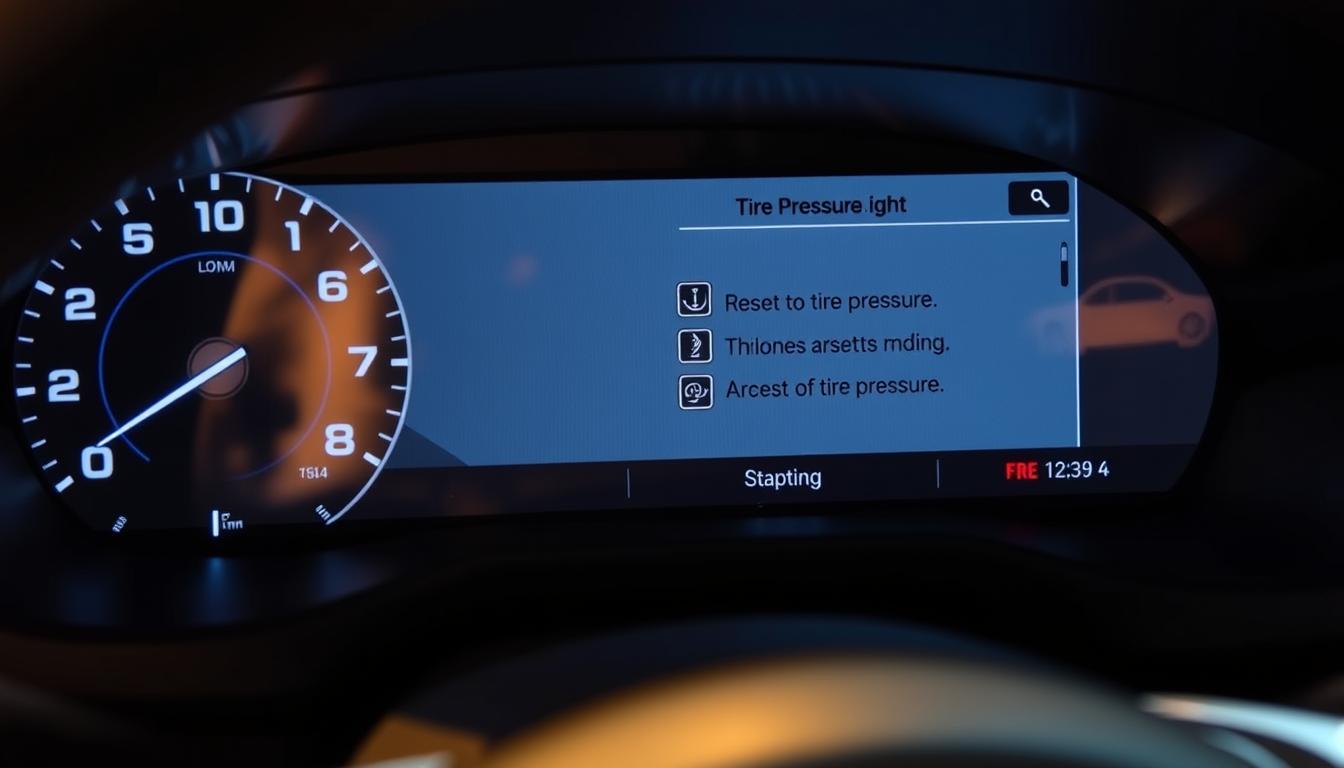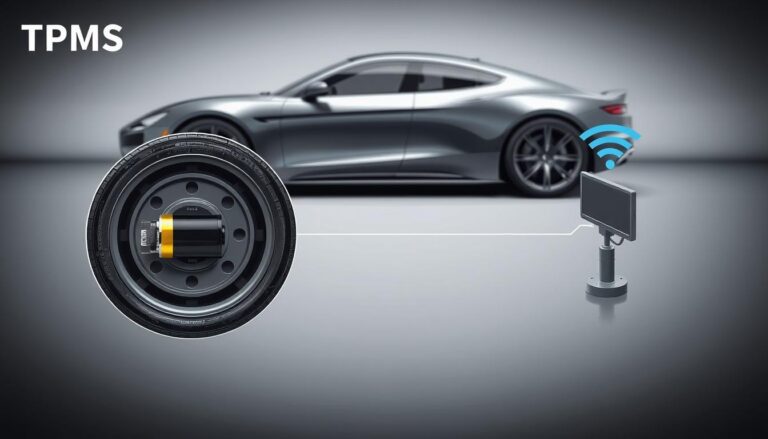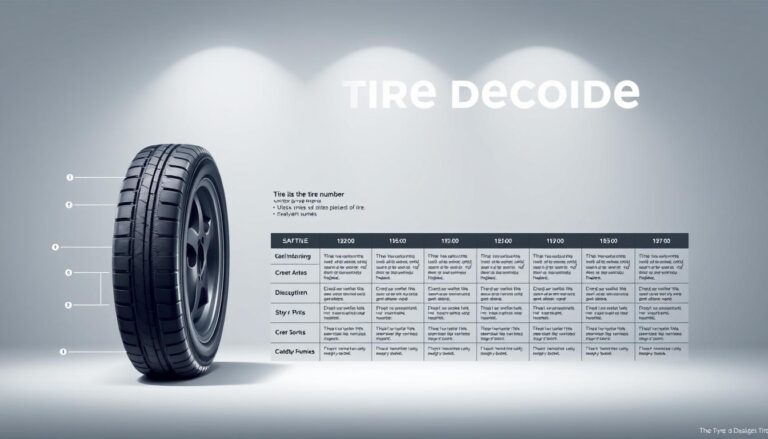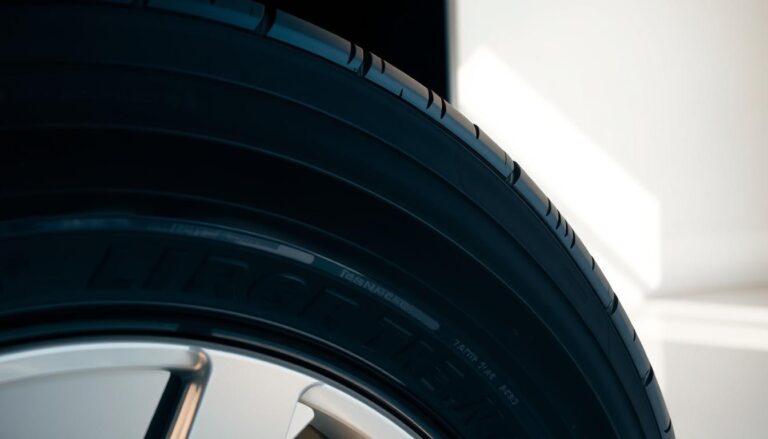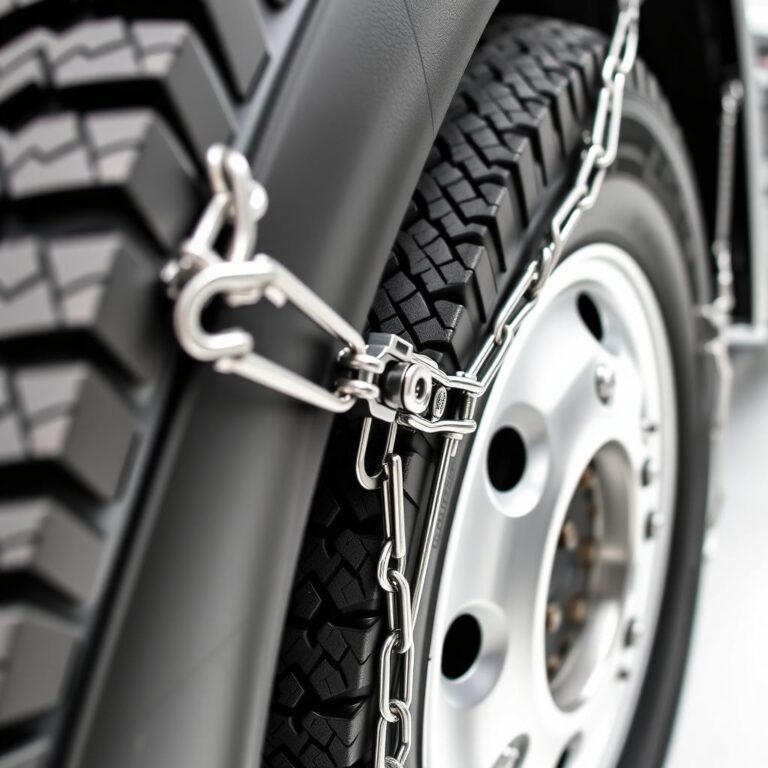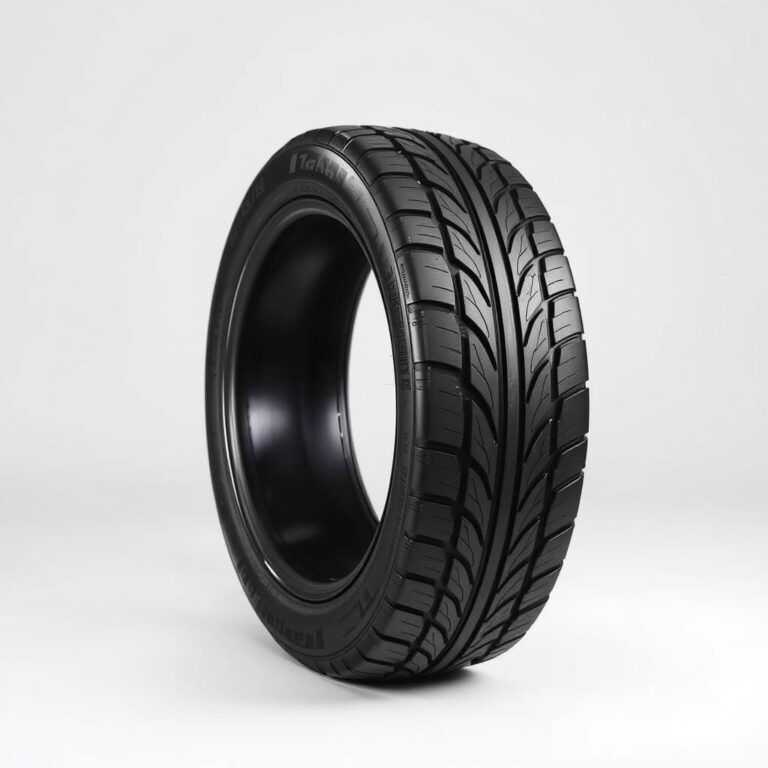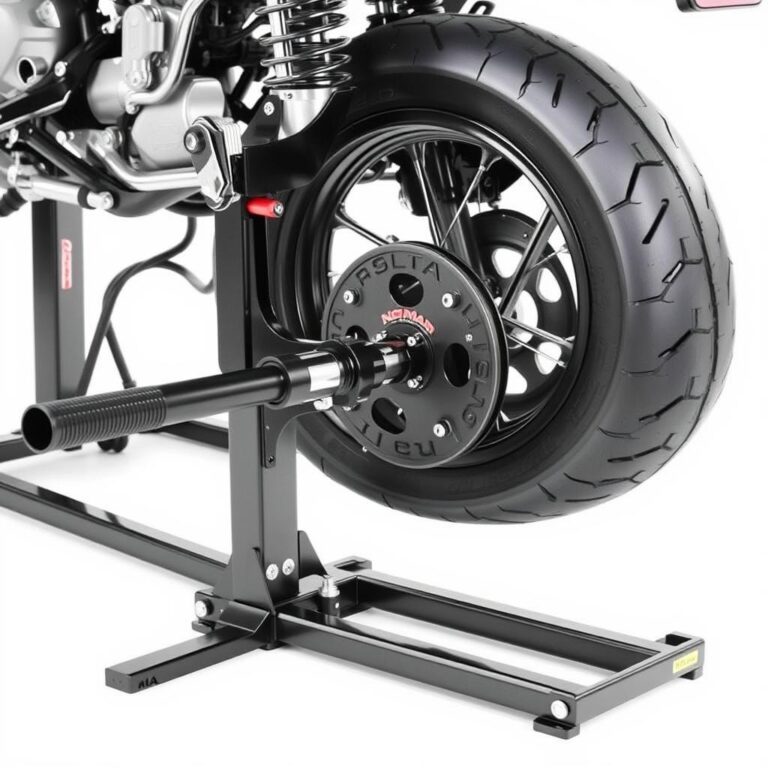Reset Tire Pressure Light: A Step-by-Step Guide
Driving with the wrong tire pressure can be dangerous. It can also make your car less efficient. The tire pressure light is a warning that tells you if your tires need air.
Today’s cars have systems that check tire pressure all the time. If the light comes on, it means your tires might be low. This could make your car unstable and use more gas.
Knowing how to turn off the tire pressure light can save you a lot. This guide will show you how to fix the warning light. You’ll learn how to keep your car safe and running well.
It doesn’t matter what kind of car you drive. Knowing how to reset the tire pressure light is important. We’ll make it easy to understand and follow.
Understanding Your Tire Pressure Monitoring System (TPMS)
Modern cars have advanced tire pressure monitoring systems. These systems help keep your tires in top shape and safe. Resetting your tire pressure monitoring system is key to your vehicle’s tire health and safety.
The system gives you real-time updates on your tires. It warns you of any issues before they get worse. Knowing how it works helps you take care of your vehicle’s tire pressure sensor.
Different Types of TPMS Systems
There are two main types of tire pressure monitoring systems in cars:
- Direct TPMS: Uses sensors in each tire to check pressure
- Indirect TPMS: Checks pressure through wheel speed sensors
Why TPMS Systems Activate Warning Lights
TPMS warning lights can light up for a few reasons:
| Trigger Reason | Potential Action Required |
|---|---|
| Low Tire Pressure | Inflate tires to recommended PSI |
| Temperature Changes | Recalibrate tire pressure sensors |
| Sensor Malfunction | Professional diagnostic check |
Common TPMS Sensor Locations
Tire pressure sensors are found in certain spots on your vehicle’s wheels. Most cars have sensors:
- Inside the tire’s air valve stem
- On the wheel’s inner rim
- Within the tire’s pressure valve
Knowing how to reset your TPMS can save you time and money. Each car is different, so always check your owner’s manual for specific instructions.
When to Reset Your Tire Pressure Light
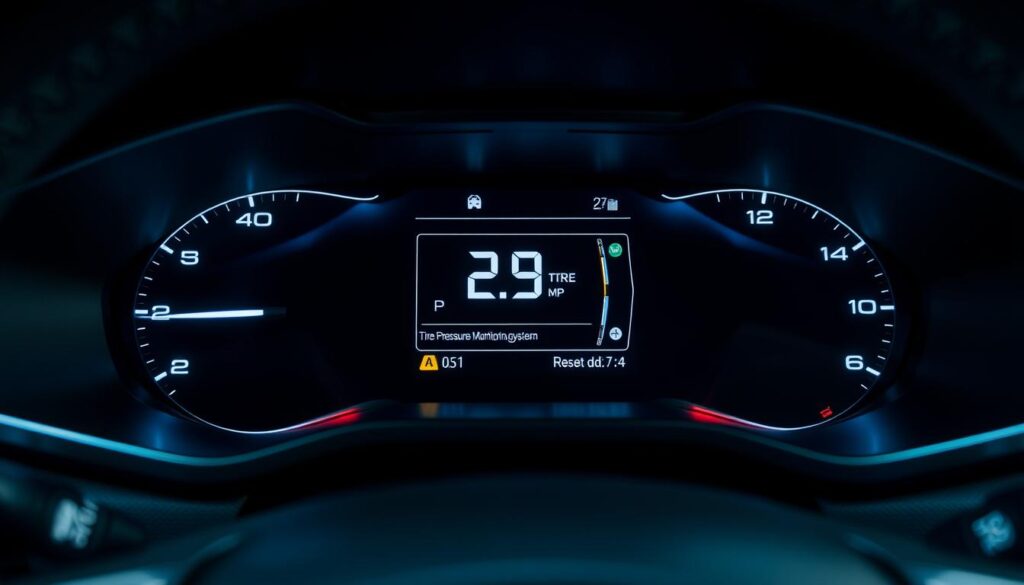
Knowing when to reset your tire pressure light is key for your car’s safety and performance. The light can show several important situations that need quick action.
There are certain times when you need to reset the tire pressure light:
- After inflating tires to the correct pressure as recommended by the manufacturer
- After a tire rotation or replacement
- When replacing TPMS sensor batteries
- After fixing any tire pressure problems
A tire pressure light not going off right away doesn’t always mean there’s a problem. Sometimes, the system just needs time to adjust after you’ve maintained the tires.
Important warning signs that mean you should reset the tire pressure light right away include:
- Changes in temperature that affect tire pressure
- Recent wheel alignment or balance service
- Found air pressure differences during a routine check
Ignoring a tire pressure warning can be risky. It can cause lower fuel efficiency, uneven tire wear, and a higher chance of tire failure while driving.
Always check the actual tire pressure before trying to reset the warning light. This makes sure you’re fixing the real issue, not just hiding a warning.
Essential Tools for Resetting Tire Pressure Sensors
To reset the tire pressure warning light, you need the right tools. Knowing what to use makes the process easier and more precise.
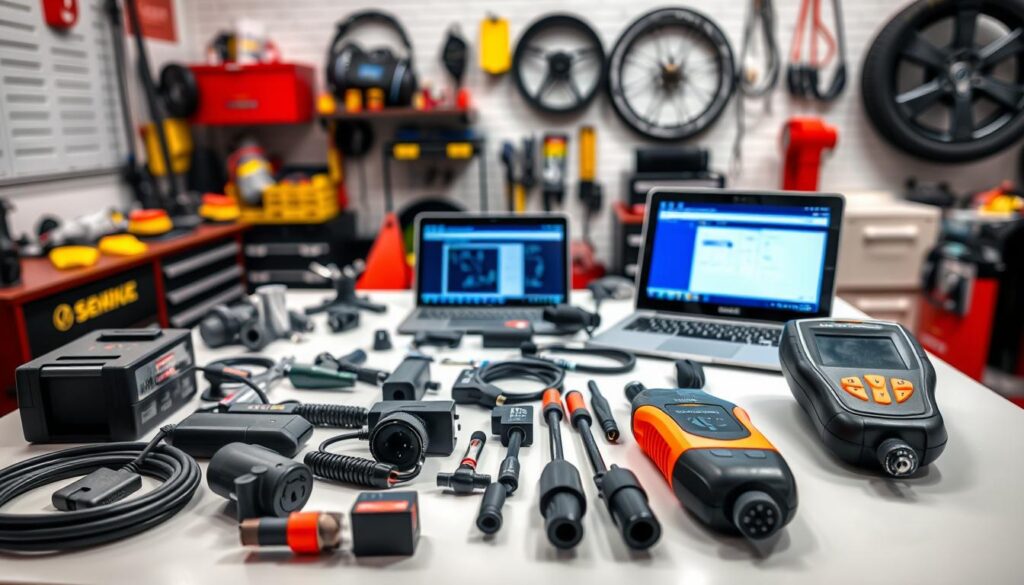
TPMS Reset Tools and Equipment
Having the right tools is key for a successful reset. Each car needs its own special equipment for the job.
- Tire pressure monitoring system (TPMS) diagnostic tool
- Digital tire pressure gauge
- Torque wrench
- Valve core removal tool
- Replacement valve stem caps
Vehicle-Specific Requirements
Every car maker has its own way of resetting the TPMS. Professional-grade scan tools offer the right steps and can spot sensor problems.
Safety Equipment Needed
It’s important to stay safe when resetting tire pressure sensors. You’ll need:
- Protective work gloves
- Safety glasses
- Adequate lighting
- Clean work surface
Experts say using quality tools is best for a safe and correct reset.
How to Reset Tire Pressure Light
Resetting the tire pressure light needs careful steps. The method changes based on your car’s type. Most people can reset it by following a few simple steps.
Before you start, make sure you have these things ready:
- Inflate all tires to the recommended pressure
- Ensure tires are cold for accurate readings
- Locate your vehicle’s specific reset procedure
The basic steps for most cars are:
- Check tire pressure with a reliable gauge
- Inflate or deflate tires to manufacturer’s specifications
- Turn vehicle ignition to the ON position
- Press and hold the TPMS reset button
Each car has its own way to reset the tire pressure light. Here are some common methods:
| Vehicle Type | Reset Method |
|---|---|
| Newer Vehicles | Dashboard reset button |
| Older Models | Key cycle method |
| Luxury Vehicles | Advanced electronic reset |
Always check your car’s manual for the right steps. If you’re stuck, you might need a pro’s help.
Manual Reset Method Without Special Tools
Resetting your tire pressure sensor doesn’t need expensive tools. Many drivers can clear the tire pressure light with simple methods found in most cars. Knowing these manual reset techniques can save time and money, keeping your vehicle safe.
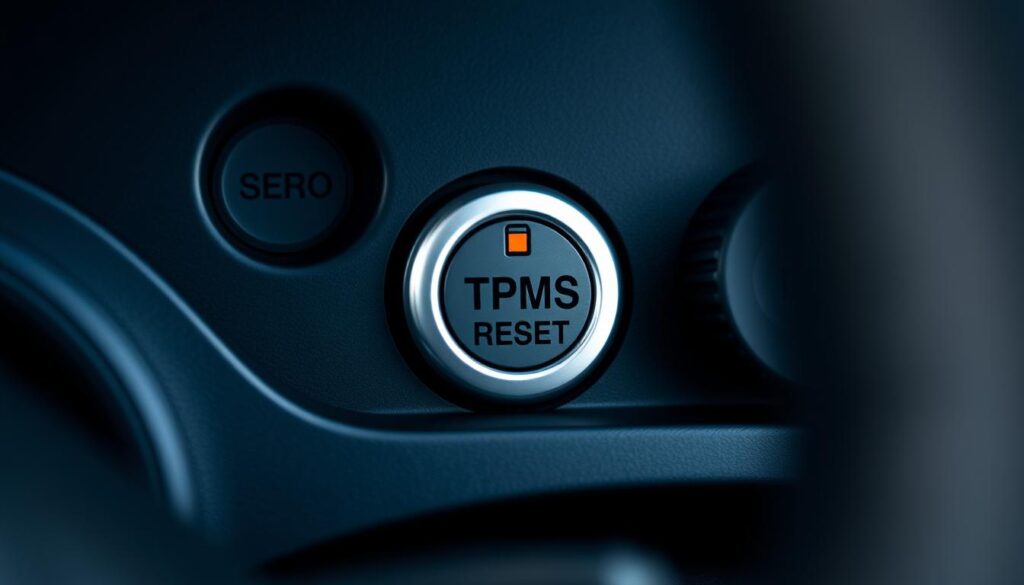
Before trying to reset tire pressure sensors, make sure your tires are at the right pressure. The correct tire inflation is key for safety and sensor work.
Key-Based Reset Procedure
The key-based reset method works for many cars. Here’s how to clear the tire pressure light:
- Turn the ignition to the “ON” position without starting the engine
- Press and hold the tire pressure reset button for 3-5 seconds
- Wait for the tire pressure light to blink and then stop
- Start the vehicle to confirm the reset
Dashboard Button Method
Modern cars often have a special dashboard button for resetting tire pressure sensors. Find this button, usually near the steering wheel or center console. Press and hold the button until the tire pressure light stops blinking.
Drive and Reset Method
Some cars need you to drive to reset tire pressure sensors. Drive your car over 30 mph for about 10-15 minutes. This lets the system recalibrate and clear the tire pressure light on its own.
Remember, different cars have their own reset ways. Always check your owner’s manual for how to reset tire pressure sensors in your car.
Using Professional TPMS Reset Tools
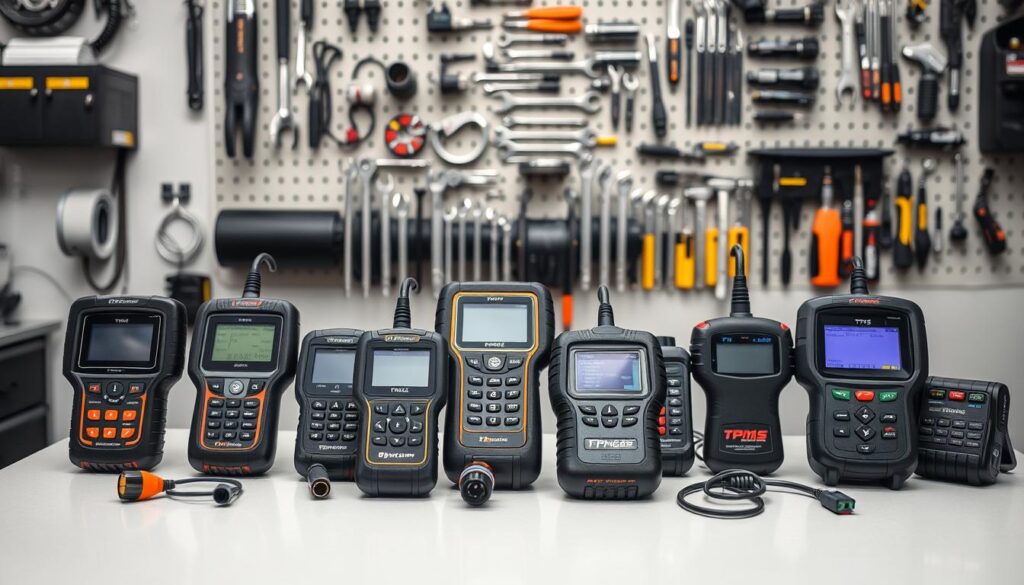
Professional TPMS reset tools offer advanced solutions for complex TPMS challenges. These tools go beyond manual reset methods. They provide detailed diagnostic and recalibration capabilities for vehicle tire pressure systems.
Automotive professionals use these tools to talk directly to vehicle electronic control units (ECUs). They perform precise tire pressure light reset procedures. The tools help technicians:
- Diagnose sensor malfunctions
- Program new TPMS sensors
- Perform complete system resets
- Check if sensors work right
Each vehicle maker needs a specific reset method. Professional TPMS reset tools adjust to these needs. They ensure accurate recalibration for different vehicle makes and models.
| Tool Type | Compatibility | Key Features |
|---|---|---|
| Handheld TPMS Scanners | Many Vehicle Brands | Sensor diagnostics, reset functions |
| Professional Diagnostic Tools | Specific Manufacturer Systems | Advanced programming, detailed analysis |
| Wireless TPMS Relearn Tools | OEM-Specific Protocols | Wireless sensor communication, exact calibration |
While these tools offer great capabilities, they are a big investment. Automotive repair shops and serious enthusiasts usually use them. They need accurate tire pressure monitoring system reset and sensor management.
Troubleshooting When Tire Pressure Light Won’t Reset
Having a tire pressure light that won’t reset can be really frustrating. If your tire pressure light keeps on, it’s important to know why and how to fix it.
Common Reset Failures
There are a few reasons why resetting the tire pressure light might not work:
- Using the wrong reset method for your car
- Communication issues with the sensors
- Problems with the tire pressure itself
- Issues with the car’s battery affecting the sensors
Sensor Malfunction Signs
It’s important to notice if your sensors are acting up. Look out for these signs:
- Intermittent warning lights
- Pressure readings that don’t match up
- Getting the same warning even after checking the pressure
- Sensors acting strangely when you try to reset them
When to Seek Professional Help
Some problems need a pro to fix. If you’re having trouble with the tire pressure light, get help if:
- You’ve tried resetting it many times without success
- The light keeps on even after you’ve checked everything
- You think there’s damage to the TPMS system
- The car’s electronics are too complex for you to handle
Experts have the tools and knowledge to find and fix problems with your TPMS system. They can help when DIY efforts don’t work.
Maintaining Proper Tire Pressure After Reset
After resetting the tire pressure warning light, keeping the right tire pressure is key. It affects your car’s performance and safety. The right pressure improves fuel efficiency and handling.
Tire pressure can change due to many factors. Temperature, altitude, and load can all affect it. Regular checks prevent issues with the tire pressure light.
- Check tire pressure at least once a month
- Inspect tires before long trips
- Use a reliable digital tire pressure gauge
- Inflate tires to manufacturer-recommended PSI
Knowing your car’s recommended tire pressure is vital. Each vehicle has its own needs based on its weight, design, and use.
| Vehicle Type | Recommended PSI | Check Frequency |
|---|---|---|
| Passenger Cars | 32-35 PSI | Monthly |
| SUVs | 35-40 PSI | Bi-monthly |
| Light Trucks | 40-50 PSI | Every 3 weeks |
Sticking to a regular tire pressure check routine is important. Proactive care keeps your car running well and tires lasting longer.
Preventing Future Tire Pressure Light Issues
Keeping your tires at the right pressure is key for safety and performance. Taking care of your vehicle ahead of time can stop the tire pressure light from coming on too often. It also helps avoid sudden maintenance needs.
Regular upkeep is vital to avoid tire pressure problems. Drivers can follow a few steps to keep their vehicle’s tire pressure system working right.
Essential Maintenance Strategies
- Do monthly tire pressure checks
- Use a good digital tire pressure gauge
- Check pressure when tires are cold
- Recalibrate tire pressure light after seasonal changes
- Replace TPMS sensor batteries every 5-7 years
Seasonal Pressure Considerations
Temperature greatly affects tire pressure. For every 10-degree Fahrenheit change, tire pressure shifts approximately 1 PSI. Drivers need to watch closely during big weather changes.
Winter is tough for tire pressure. Cold air makes tires lose pressure. Summer heat makes air expand, which can raise pressure too high.
Professional Recommendations
Car experts say to get professional TPMS system checks yearly. These checks can find sensor problems early, before they cause constant warning lights.
By following these maintenance tips, drivers can stop the tire pressure light from coming on too often. This ensures your vehicle runs well all year.
Common Mistakes to Avoid During Reset
Resetting the tire pressure light seems easy, but many people make big mistakes. These errors can put your safety and car’s performance at risk. Knowing these common mistakes can help you avoid problems.
- Skipping initial tire pressure inspection before reset
- Using incorrect reset procedures for your specific vehicle model
- Ignoring persistent warning lights after multiple reset attempts
- Attempting DIY reset without proper tools or knowledge
Drivers often rush the reset process without checking tire pressure first. Always measure and adjust tire pressure to manufacturer specifications before attempting to reset the TPMS light. Each car model has its own reset method, so a one-size-fits-all approach won’t work.
Another big mistake is ignoring warning lights that keep coming on. If your tire pressure light stays on after trying to reset it several times, there might be a bigger problem. You might need professional tools to find out what’s wrong with the system.
When resetting tire pressure lights, safety should always come first. Resetting sensors wrong can lead to bad readings, which can cause accidents. If you’re unsure, check your car’s manual or ask a certified mechanic for help.
Conclusion
Knowing how to reset the tire pressure light is key for your car’s safety and performance. The TPMS reset might seem hard, but with the right tools and knowledge, you can handle it. Always check your owner’s manual for the exact steps for your car.
Keeping your tires in good shape is more than just resetting the light. It means regular checks, correct inflation, and fixing any sensor problems. By being proactive with tire care, you avoid safety risks, save on fuel, and make your tires last longer.
When it comes to tire pressure systems, safety always comes first. While many can reset the light on their own, getting help from a pro is wise if problems keep coming back. By knowing your TPMS and keeping the right tire pressure, you’ll drive safer and more smoothly.
Tire pressure monitoring systems are advanced safety tools for drivers. Take good care of them, follow the maker’s rules, and never ignore the warning lights. Your dedication to car upkeep will reward you with better reliability and safety on the road.
